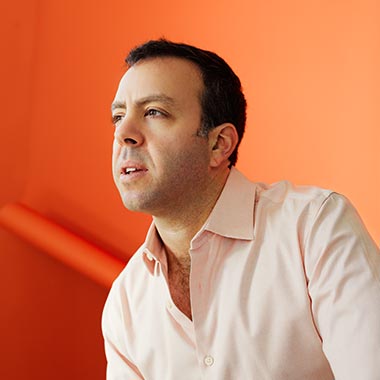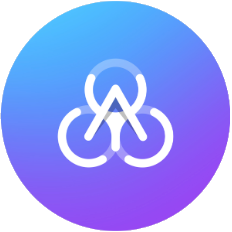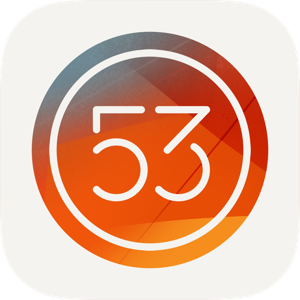Computer Wizard
Michael Kane
I can highlight that he's an exceptionally skilled developer, but that wouldn't do him justice. Where Michael stands out is in his soft skills: his personality and character. Michael is among the most loyal, hardworking, persevering, personable, and empathetic people I have had the pleasure to know and the privilege to work with, and to find such a combination in such a strong developer is a rarity.
His addition to our team brought forth an immediate shift in dynamic, increasing collaborative ideation and information-sharing, as well as enhancing our general team camaraderie. He offers suggestions readily and in an egoless manner — truly attempting to make the team better — and encourages others to do the same, regardless of their experience level. He's an impressive and knowledgeable engineer, and he's also humble and eager to learn from anyone.
He has a comprehensive knowledge of the latest front-end tools, techniques and libraries. He constantly seems to be learning and improving the systems he builds, writes understandable documentation and works seamlessly with back-end developers — I would not hesitate to work with him again as I don't think I could find anyone better.
On more than a few occasions, Michael has rescued me from a predicament arising from my naiveté on the subject. Michael has fantastic wit and humor. It is a pleasure to work with him. What strikes me about his work is how complete it is on delivery. Michael takes care to cover every detail in realizing a goal. His management of AWS resources would prove invaluable to an organization looking to utilize all of even their most obscure services.
Dramanoes 2022-2025, Co-Founder
Dramanoes is a tabletop card game I've developed with my brother, entering production in April 2025. While most of this work has been in writing, I also coded the system that assembles Airtable data with our graphic designs in order to print out randomized decks of cards for testing.
Wakey World 2025 - present, Sole Developer
Wakey World is an experiment in crowdsourcing wake-up calls.
Messages are selected randomly, and users receive a call based on the schedule they set up on the site.
iz u ded? 2016 - present, Sole Developer
iz u ded is a simple utility with a unique value proposition.
I adopted a puppy and morbidly realized that, if I were to be hit by a bus on a Friday, it might be a few days before anyone knew I was unavailable to care for him.
With a tongue-in-cheek presentation of a serious matter, I started building izuded.today.
This application was initially an exercise in minimalism. It used no JS frameworks (jQuery only), no datastore (except for a few bits of data stored in Auth0), and no "servers" (except for AWS S3 & Lambda). With this architecture, the initial cost to run the application was $1 / month.
In recent months, I've updated the site using NextJS and CI/CD via GitHub Actions.
Consortium Key 2021-2022, Technical Contributor
Consortium Key is a crypto hedge fund and suite of tools for trading altcoins.
As a contributor to the project, I've helped implement the React front end as well as Discord bots that follow trading activity on the Ethereum blockchain.
Kindur 2019, Lead Front End Engineer
Kindur (on Crunchbase) helps baby boomers manage their money so they can "retire fearlessly".
In this role, I did work on the NodeJS back end but my primary responsibility was in leading the development of our marketing site.
I researched and selected technologies to improve site performance, set up CI/CD pipelines using CircleCI, Gatsby, and Netlify, and designed a streamlined architecture that let us move fast (and not break things).
To increase UI consistency and reduce the workload for the back end engineers, I built a shared components library that automatically deployed to NPM with each merge to master. This minimized the work required to keep our front and back ends in sync, while also allowing us to experiment with new semantic versions without any cross-team dependencies.
In addition, I mentored a junior developer and together we implemented a design system that enabled us to quickly translate Sketch and Invision mockups into functional components.
Bloomberg 2017-2019, Senior Software Engineer
Financial data from Bloomberg L.P. has traditionally been served via the Bloomberg Terminal, a fixture in the offices of investment firms worldwide.
In order to serve customers seeking to process data using their own in-house systems, Bloomberg launched the Enterprise Access Point in March 2018. Through the Enterprise Access Point, customers can browse datasets and purchase packages of bulk financial data to import through an API.
In my first year at Bloomberg, I was one of the three developers working on the user-facing components the site, using Express.js on the server and React on the front end. Never before had I worked on a web application as complex and thoroughly-tested, utilizing Jest, Mocha, Nightwatch.js, and Jenkins servers for continuous integration.
Hyr 2016, Consulting Developer
Hyr (on CrunchBase) is building a marketplace to efficiently connect traditional companies - like restaurants and bars - with independent labor to fill hourly paid shift work, on demand.
I helped architect and implement a "serverless" application for the startup's prototype.
In so doing, I touched many AWS tools, including Lambda, CloudSearch, Elastic Beanstalk, DynamoDB, RDS, SNS, SQS, and SWF.
I learned how to divide an application's functionality across disparate microservices communicating over SQS, SNS, and HTTPS, and discovered rough edges (and workarounds) in the technologies used in this latest trend in software development.
Foghorn 2015 - 2016, Co-Founder
Emergency phone numbers for families.
Subscribers receive a personal phone number for easily reaching emergency contacts.
Depending on the configuration of the Foghorn number, incoming calls are routed to trusted contacts in tiers, with each incident generating phone, email, and sms notifications.
Ad-hoc mailing lists serve to keep people informed while they resolve each incident.
From the backend to the front, I'm using Heroku, Postgres, AWS SQS, CoffeeScript, Fluxxor and React. My favorite aspect is the integration with Codeship to perform continuous delivery.
Foghorn will be live Q1 2017 edit: since taking on full-time employment, I've had to put this project on the back burner, but I still love it and intend to launch! (Just as soon as I have the time...).
FiftyThree 2015, Full-Stack Developer
FiftyThree (on CrunchBase) has a social network called Mix based on the artwork their users create using their app, Paper.
They needed tools to manage this content. They provided the APIs and I built the interface using React, Fluxxor and CJSX. It's private, but here's a screencast describing it:
This team writes excellent code and taught me lessons like the priceless "code you don't write doesn't break."
Healthy Hand 2013-2014, Co-Founder
Healthy Hand (defunct, Vogue, NY Daily News) provided healthy meal delivery by combining dietitian-curated meals served by local delivery restaurants.
In addition to various co-founder responsibilities, I built the administrative interface, multiple iterations of our consumer-facing product, and managed 3 outside developers. With user-specific dietary settings, our proprietary dietetic database, and GrubHub's API, we generated emails containing healthy meal options for our subscribers.
Clicking a healthy meal option would then place the order through GrubHub's API so subscribers could stick to their diets without needing to plan ahead or face the decision fatigue (and poor dietary habits) of typical online ordering.
Hotlist 2010-2012, Lead UI Developer
Hotlist (defunct) was a location-based social media platform that used Facebook social graph data to help users make plans and predict the crowds at millions of venues worldwide.
I worked in a tight-knit 3 developer team building Hotlist's web product used by hundreds of thousands of users.
The main challenge was in keeping the UI performant and easy to use across multiple browsers in the days before Angular and React.
One of my favorite contributions was a library that matched the jQuery.getJSON() method and improved performance by a factor of 5+ for browsers supporting HTML5 Web Workers.
* Note: Crunchbase lists the wrong 'Michael Kane'.
Want more?
Email me for sample code, additional examples, or to discuss your next project!
Powered with by Astro

















